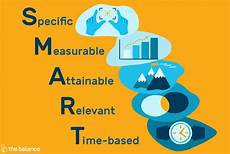10 tips to set & meet Business Goals & Objectives
[ad_1]
 Mission Statement, Vision, Strategy, Goals, Objectives, Goals vs. Objectives, How to set Short-Term Goals, Examples of ST Goals, How to set Long-Term goals, Examples of LT Goals.
Mission Statement, Vision, Strategy, Goals, Objectives, Goals vs. Objectives, How to set Short-Term Goals, Examples of ST Goals, How to set Long-Term goals, Examples of LT Goals.
`
1. What is a Mission Statement?
A Mission Statement defines what line of business a company is in, why it exists or what purpose it serves. Every company should have a precise statement of purpose that gets Employees excited about what the company does and motivates Candidates to become part of the organization. A mission statement should also define the company’s corporate strategy and is generally a couple of sentences in length.
2. What is your Vision?
A Vsion statement describes what a company desires to achieve in the long-run, generally in a time frame of 5-10 years, or sometimes even longer. It depicts a vision of what the company will look like in the future and sets a defined direction for the planning and execution of corporate-level strategies.
- a) Definition of Strategy
Strategy is an action that managers take to attain one or more of the organization’s goals. Strategy can also be defined as “A general direction set for the company and its various components to achieve a desired state in the future“. Strategy results from the detailed Strategic planning process”.
How? A strategy is all about integrating organizational activities, then utilizing and allocating the resources within the organizational environment – to meet the present objectives. While planning a strategy it is essential to consider that decisions are not taken in a vaccum and that any act taken by a firm is likely to be met by a reaction from those affected, competitors, customers, employees or suppliers.
Planning. Strategy can also be defined as knowledge of the goals, the uncertainty of events and the need to take into consideration the likely or actual behavior of others. Strategy is the plan of decisions in an organization that shows its objectives & goals, reduces the key policies, then plans for achieving these goals, by defining the business the company is to carry on, the type of economic & human organization it wants to be, then the contribution it plans to make to its shareholders, customers + society at large.
b) Features of Strategy
- Strategy is significant because it is not possible to foresee the future exactly. Without a perfect foresight, the firms must be ready to deal with the uncertain events – which constitute the business environment.
- Strategy deals with long term developments rather than routine operations (ie, it deals with probability of innovations or new products, new methods of productions, or new markets to be developed in future.
- Strategy is created to take into account the probable behavior of customers & competitors. Strategies dealing with employees will also predict the employee behavior.
- Strategy is a well defined roadmap of an organization. It defines the overall mission, vision & direction of an organization. The objective of a strategy is to maximize an organization’s strengths and to minimize the weakness it has, because of the competitors. (do a SWOT analysis: Strengths, Weakness, Opportunities & Threats)
- Strategy, in short, bridges the gap between “where we are” [Mission] and “where we want to be” [Vision].
4. What are Business Goals?
Business goals are “Goals that a business anticipates accomplishing in a set period of time”. You can set business goals for your company in general as well as for particular functions, employees, managers and/or customers. Goals typically represent a company’s larger purpose and work to establish an end-goal (for Scoring) and employees to work toward. Business goals do not have to be specific or have clearly defined actions. Instead, business goals are broad general outcomes that the company wishes to achieve.
Why? Business Goals are an essential part of establishing priorities and preparing your company up for success over a set period of time. Taking the time to set Goals for your business and create Individual Objectives to help you reach each goal – can greatly increase your probability to achieve those goals. Here, we explore the Definition of business goals, the difference between business goals & objectives and provide tips as well as examples of short & long-term business goals.
Setting business goals are important for several reasons, including that they:
- Provide a way to measure success
- Keep all employees united – as to what the goals of the company are
- Give employees a clear understanding of how decision-making reaches company’s goals
- Ensure the company is headed in the right direction
SMART Goals:
 Goals are part of every aspect of business & life – which provides a sense of direction, motivation, clear focus, & identifies importance. By setting goals, you are providing yourself with a target to aim for. A SMART goal is used to help guide goal setting. SMART is an acronym that stands for Specific, Measurable, Achievable, Realistic, & Timely. Therefore, a SMART goal incorporates all of these criteria to help focus your efforts and increase the chances of achieving your goal.
Goals are part of every aspect of business & life – which provides a sense of direction, motivation, clear focus, & identifies importance. By setting goals, you are providing yourself with a target to aim for. A SMART goal is used to help guide goal setting. SMART is an acronym that stands for Specific, Measurable, Achievable, Realistic, & Timely. Therefore, a SMART goal incorporates all of these criteria to help focus your efforts and increase the chances of achieving your goal.
5. What are Business Objectives?
Business objectives are clearly defined & measurable Steps that are taken to meet a company’s broader goals. Objectives are specific in nature and can be easily defined and kept track of. Companies must establish specific objectives to achieve their business goals.
6. Business Goals vs. Objectives
The following are the differences between business goals and business objectives:
- Goals define the “what” of a business’s purpose whereas Objectives define the “how.”
- Goals typically only provide a general direction that a company will follow whereas Objectives clearly outline actionable steps.
- Objectives are measurable whereas business Goals generally are not.
- Objectives are specific whereas Goals are more broad & all-encompassing.
- Objectives typically have a set timeline whereas business Goals do not.
7. How to set Short-Term Goals
Short-term business goals are typically goals that you want your company to achieve in a period of weeks or months. The following are steps you can take when setting short-term business goals:
a) Identify your company’s short-term Goals for a set period of time
The first step in setting short-term goals is to figure out which goals you want to achieve in a set period of time. Many short-term goals are goals that further the achievement of long-term goals. Consider your long-term goals as well as what you want to accomplish in the next weeks or months and translate these into short-term goals that will drive your business forward.
b) Break down each Goal into actionable objectives
Next, you should break down each short-term goal into actionable objectives. These objectives should represent the steps your company will take to reach each goal. For example, if your goal is to get 7 new customers in the next month, your objectives will be the steps you will take to secure the business of 7 customers, such as putting a new Ad in a newspaper and posting more on Social Media.
c) Ensure your Objectives are measurable
The objectives you establish in the previous step need to be measurable. For example, if one of your objectives to reach a short-term goal is to post more on social media, don’t simply state “post more on social media” as a strategy. Instead, make the objective measurable by being as specific as possible. Using the above example, you could use “post on Instagram 3x a week and Facebook 2x a week for 7 weeks.”
d) Assign goal-related tasks to Employees
Once you have established the objectives for each short-term goal, assign each objective to one or more employees – who will see the objective through to completion.
e) Measure progress regularly
Regularly measure the progress of your short-term goals to ensure you are on track to meeting them in the time frame you established. For example, if you increase your social media posts to 3x a week as part of a business goal, measure any increased customer/potential customer interaction you receive as a result – monthly or at least quarterly. Keep track of the progress and adjust your objectives – if needed – to better meet your goals.
8. Examples of Short-Term Goals
Here are a few examples of short-term business goals:
- Increase product prices by 5% over the next three months.
- Hire 3 new marketing employees over the next five months.
- Increase traffic on your company’s Blog.
- Implement monthly giveaways for customers on social media.
- Begin an “Employee of the Month” award program.
- Select a Charity to begin sponsoring & use it as a promotion.
- Create a profile on a new Social Media platform.
- Increase Social media posting.
9. How to set Long-Term goals
In addition to the steps mentioned in the section on how to set short-term goals, you should also include these steps when creating long-term business goals:
a) Establish the goals you want to accomplish over the next 10 years
The first step to creating long-term business goals is to determine the goals you want to accomplish over the next several years. Many people find that setting goals 10 years out is sufficient; however, you can set goals as little as one year out or as far away as 20 years. Identify and write down as many goals as possible that you want your business to achieve in the time period you decide on.
b) Prioritize your long-term business goals
Many companies have several goals that they want to accomplish in the long-term. However, it’s difficult to focus on every goal at once. For this reason, it’s important to prioritize the goals that you want to focus on first and put your company resources into accomplishing those before moving onto other goals.
c) Break down each long-term goal into short-term objectives
Similar to how you break down short-term goals, you will also need to break down your long-term goals into actionable short-term objectives. For example, if your long-term goal is to increase your company’s overall brand awareness, you will need to break this down into short-term objectives that will ultimately help you accomplish the long-term goal. Examples of actionable objectives for the above goal would be to post to social media three times a week and collaborate with social media influencers on a monthly basis.
d) Track your company’s long-term goals regularly
An important component of accomplishing long-term goals is tracking them on a regular basis. Because long-term goals can take an extended period of time to reach, it can be easy to forget about them or lose sight of the end goal. Keeping track of the progress being made towards each goal can ensure you’re on the right path to reaching these goals and enable you to make any adjustments when needed.
10. Examples of Long-Term goals
The following are examples of long-term business goals:
- Increase the total income of your company by 10% over the next two years.
- Reduce production expenses by 5% over the next three years.
- Increase overall brand awareness.
- Increase your company’s share in its market.
- Open three new office locations throughout the United States.
- Hire 50 new employees nationwide.
- Develop and launch three new products
Do you know any other Aspects of Goals or Objective that it wud be good to know?
from Indeed 3/22 enhanced by Peter/CXO Wiz4.biz
For more Info, click on Business Goals.
[ad_2]
Source link








